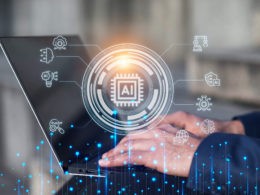Technology has graced our learning institutions for centuries now. Right from the use of radios to incorporation of modern computers, our classrooms will never be the same. Assignments that took hours to grind have been reduced to minutes using edtech such as laptops, spreadsheets, online calculators, integrated apps, etc. Access to learning materials have also improved significantly as colleges embrace cloud storage. Not to mention that lecturers can now deliver lectures from anywhere in the world, reducing geographic limitations.
While this should be good news to educators and learners, it comes with some drawbacks. In fact, stakeholders in the education sector have remained firmly embroiled in heated debates about the effects of technology on education. Whereas it’s hard to determine the side with more credible arguments, it’s undeniable that edtech has changed the way knowledge is imparted and acquired. And with such massive changes come both positives and negatives. In this short article, we’ll explore the impact of technology on education, covering both the positive and negative outcomes. Read on to learn more.
Impact of Technology on Education: The Digital Divide
Edtech has done better than bad to our education system. In fact, some people firmly believe that the challenges we’re facing with it today are just bad teething problems. Yet, it’s undeniable that it has magnified the digital divide, exacerbating existing inequalities. This is a major problem in a world where the top one percent own more than 60 percent of the global population combined. So, only a select few fully benefit from edtech. Disparities are based on learners’ socioeconomic background, geographic location, and access to technology. This is worth noting, as it hinders some students’ academic progress and future opportunities. It’s a cruel reality, an impact of technology on education that many fear confronting.
The Positive Effects of Technology on Education
Even if you’re against edtech, you must, at the very least, acknowledge the positive impact it has had on our education system. There’s just so much to talk about. However, we’ve listed the main advantages below:
Enhanced information access
Some of us started schooling when textbooks were the only access to information. Even so, they were quite rare and only children from privileged families had them. We spent weekends at neighboring estates, sharing a few copies to complete assignments. In fact, some students walked several kilometers to find copies of textbooks. In other cases, we had to stay back at school until quite late, copying the assignments. Colleges filled their libraries with old, irrelevant books, forcing students to fight for the few relevant ones. It was never easy. Then came technology. With just a few clicks, students can now explore a wide range of resources, such as online libraries, journals, educational websites, and multimedia content from any location on earth. All you need is an internet connection and an access device. How cooler can it get!
Improved collaboration
Collaboration is critical to learning, which explains why most curricula have incorporated activities and exercises for it. Unfortunately, it has never been easy in traditional learning setups. The limited time in school and the many subjects to cover hindered teachers from instituting adequate collaborative activities. The pressure reduced most educators into syllabus covering machines.
One of the positive effects of technology on education today is that it has changed things for the better. It has expanded the breadth and width of collaboration among stakeholders, i.e., students, teachers, guardians, and parents. They can instantly and seamlessly connect with each other via online platforms, video conferencing tools, and educational apps. You’re no longer alone when stuck with a difficult assignment because you easily reach your tutors, lecturers, and instructors to explain things out. If no one is available, you can collaborate with an expert team of essay writers at CustomWritings that professionally help students with academic writing issues online.
Personalized learning
Have you had the honor of watching the film Slumdog Millionaire 2008? If you haven’t, you’re certainly missing out. A masterpiece. A marvelous work of art and entertainment that highlights the struggles of many people who schooled a few decades ago. Forget about India’s high population and poor living standards, most students of the early 1980s confronted crowded and poorly ventilated classes. Teachers never delivered education to suit each student. Instead, they expected each learner to fit, a one system fits all approach. Thanks to edtech, things have gotten better. Adaptive learning software has allowed personalized learning experiences tailored to individual student needs. A slow learner can go at their own pace as they receive customized learning paths and immediate feedback.
Improved learning experiences for all
Malik Jamal thrived in the crowded Mumbai classrooms, but others didn’t. Well, we were referring to the film Slumdog Millionaire, again! Many kids struggled. While the case may seem extreme for the US and other western nations, especially in this age, it shows just how our experiences in the classroom can differ. This is especially true for people with disabilities and mental illnesses. Edtech has improved not only their access to education but also learning experiences. Assistive technologies, such as screen readers, speech recognition software, and tactile interfaces, have enabled such students to participate fully in educational activities.
Improved classroom engagement
Can you imagine keeping young learners in a crowded classroom engaged for just one hour? It’s almost impossible, right? Now, that’s what some teachers confront every day! With few teaching aids, making students engaged is a complete nightmare. This is where technology comes in. Most teachers have stopped relying solely on traditional teaching methods and integrated edtech such as multimedia presentations, virtual reality simulations, video games, interactive puzzle games and quizzes to make learning more enjoyable. As a result, some studies have reported increased motivation and deeper understanding and retention of concepts. A win -win situation.
The Negative Effects of Technology on Education
Now that we’ve discussed the pros, it’s time to explore the negative effects of technology on education. There’s always a downside to any tech. Below are a few ones derailing the education sector:
Distraction
The presence of tech devices such as laptops, smartphones, tablets, and computers in the classroom can derail some students. Not all learners are equal or the same. So, you’ll always find the ones hooked to social media and online games rather than classwork. They’d rather chat than write their essays.
Erosion of social skills
As we go increasingly online, we limit opportunities for face-to-face interaction. This is the case with edtech. Students are finding it easier and more comfortable chatting online than having face-to-face conversations, which undermines interpersonal skills development. If you can’t communicate well in person, you’re heading in the wrong direction.
Information overload
The internet has opened the door to a whole new world of information that’s hard to process and verify. Even fools can open websites, blogs, and social media pages where they share misinformation. These can be exceedingly difficult for students to discern, leading to confusion and potentially inaccurate learning.
Health implications
Well, too much of anything is dangerous. Having technology in class could lead students into dependency, using their gadgets in all other aspects of life. The consequences could be far-reaching. For instance, studies have linked excessive screen time and poor ergonomic practices to various health implications, including eye strain, musculoskeletal problems, and sedentary behavior.
Academic dishonesty
This is the elephant in the room right now. New technological inventions, especially AI, have had a significant negative impact on academic honesty. Most students no longer do their research. Instead, they rely on ChatGPT, Textero, and other language-based techs to write their papers. This has proven quite problematic for educators.
The Future is EdTech but with a Lease!
Technology has undoubtedly revolutionized our education system for the better. Our children have avoided some many troubles and we were confronted with very little benefits. Edtech is here and it’s going nowhere. We should embrace it and enjoy its benefits. At the same time, we should have measures to minimize, if not eliminate, its disadvantages. As it is said, where there is a will, there is a way.












